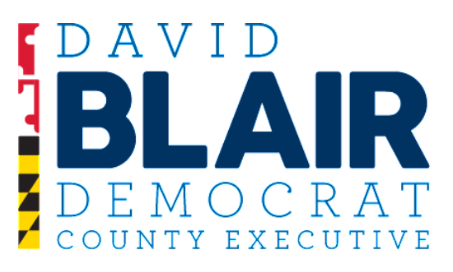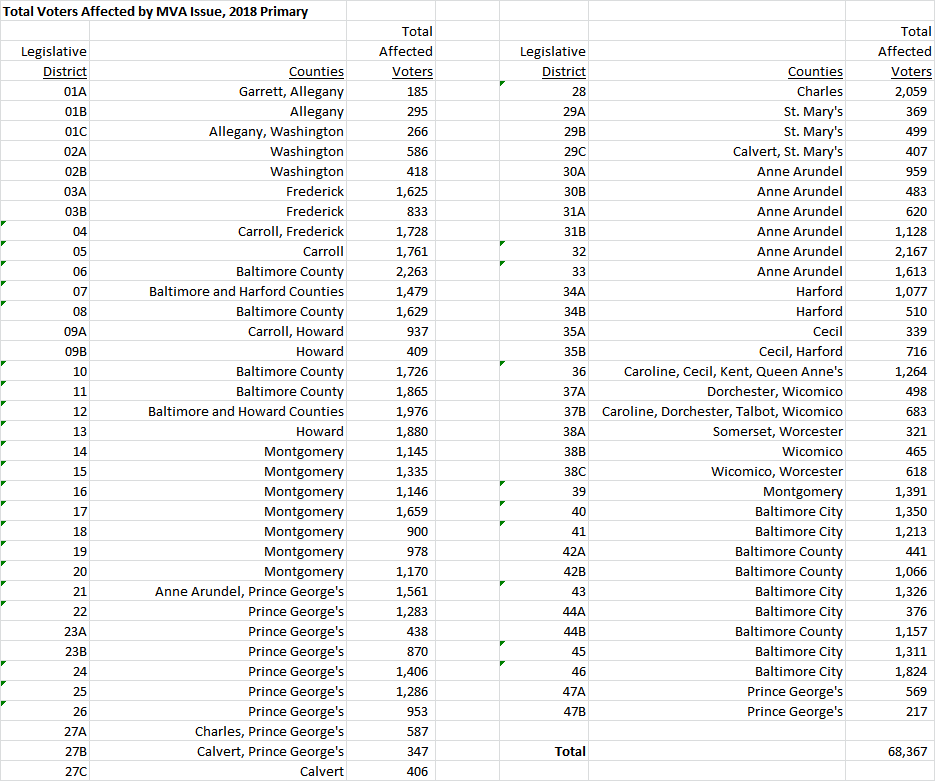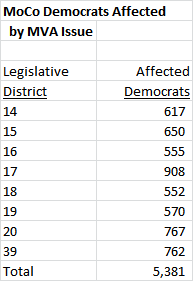By Adam Pagnucco.
Montgomery County’s Republican Party is in free fall. Consider the following five facts, all derived from data provided by the State Board of Elections.
1. While the numbers of MoCo Democratic and unaffiliated registered voters have been growing, the number of registered Republicans is lower now than in 1988.
In the 1988 primary, there were 110,829 registered Republicans in MoCo. That number peaked at 136,269 in the 1996 general election. Since then, the number of registered Republicans fell to 105,561 in the 2020 general. From the 1988 primary through the 2020 general, growth in MoCo registered voters was 109% for Democrats, 241% for unaffiliated and third party voters and minus 5% for Republicans.
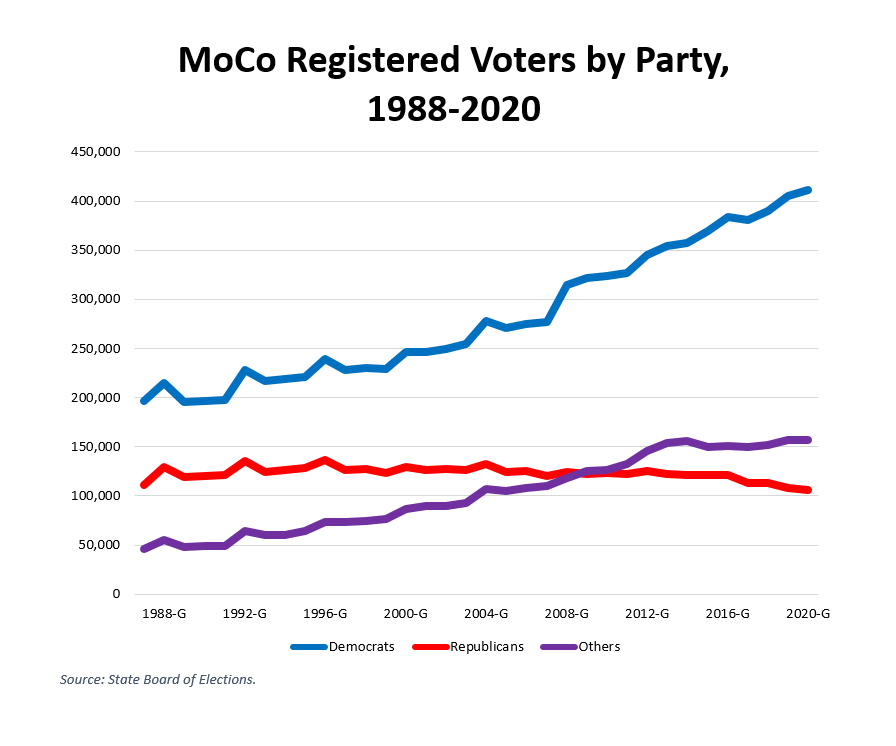
2. The share of registered MoCo voters who are Republicans has fallen by half in the last three decades.
In the 1992 primary, 33% of all registered MoCo voters were Republicans. In the 2020 general, the GOP share fell to 16%. The number of registered unaffiliated and third party voters (156,702 in the 2020 general) greatly exceeds the number of registered Republicans (105,561).
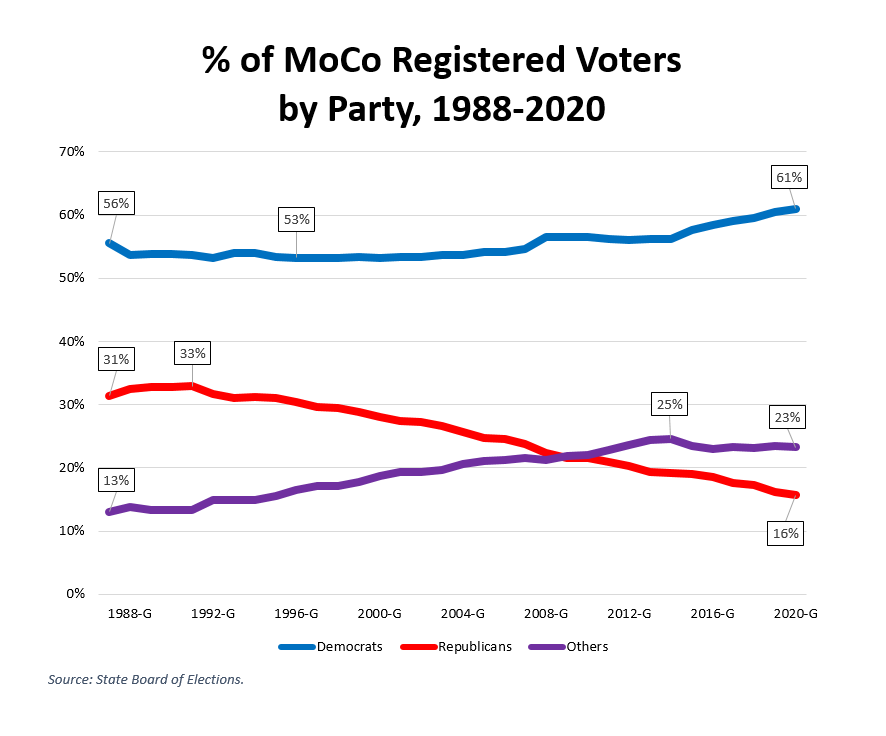
3. The ratio of registered MoCo Democrats to Republicans is at its highest level since at least 1988.
In the 1992 primary, there were 1.6 registered MoCo Democrats for every MoCo Republican. By the 2020 general, there were 3.9 registered MoCo Democrats for every Republican.
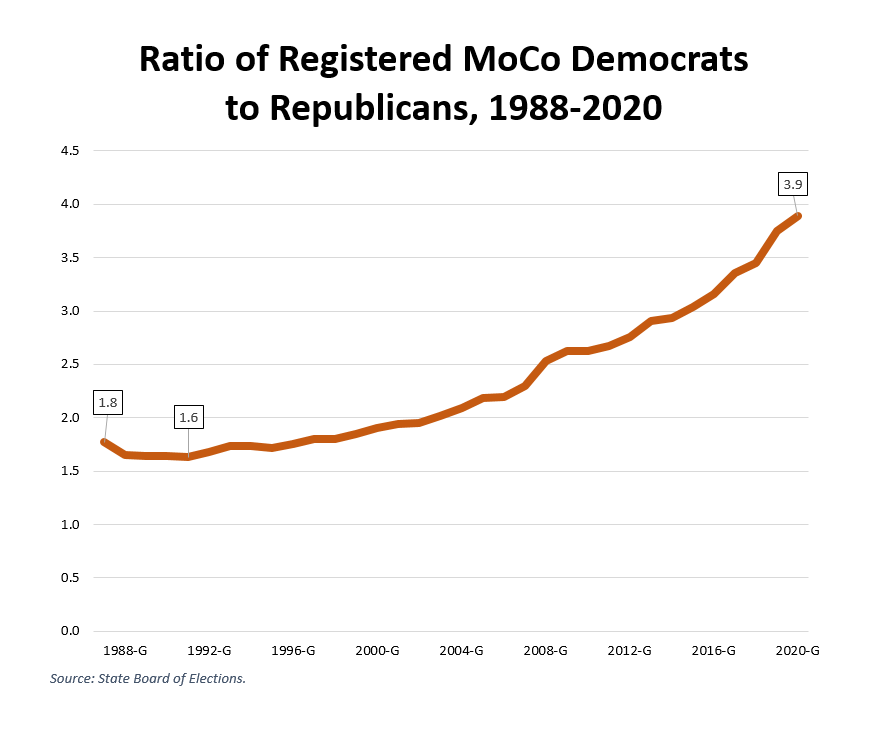
4. Among actual voters in MoCo, the share who are Republicans has fallen behind unaffiliated and third party voters while Democrats dominate.
Republicans compete directly with Democrats in general elections. In 1988 and the early 1990s, Republicans comprised 30% or more of actual voters in MoCo general elections, both presidential and gubernatorial. Their share of actual voters fell to 17% in 2018 and 15% in 2020. Unaffiliated and third party voters were 19% of actual voters in 2018 and 21% of actual voters in 2020. Democrats now exceed 60% of actual voters, up from the mid-to-high 50s in the 1990s.
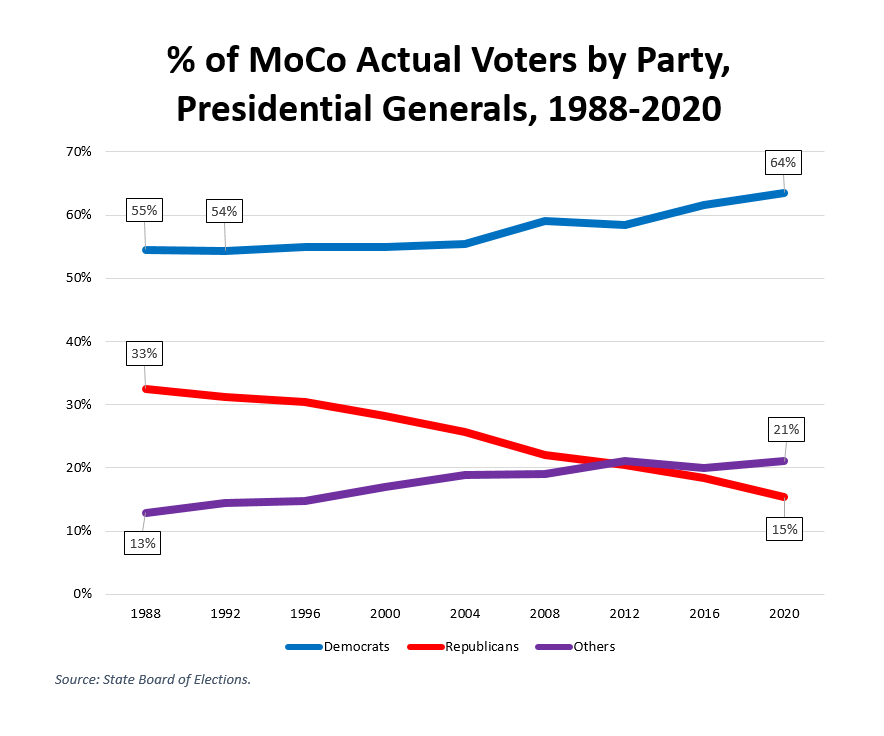
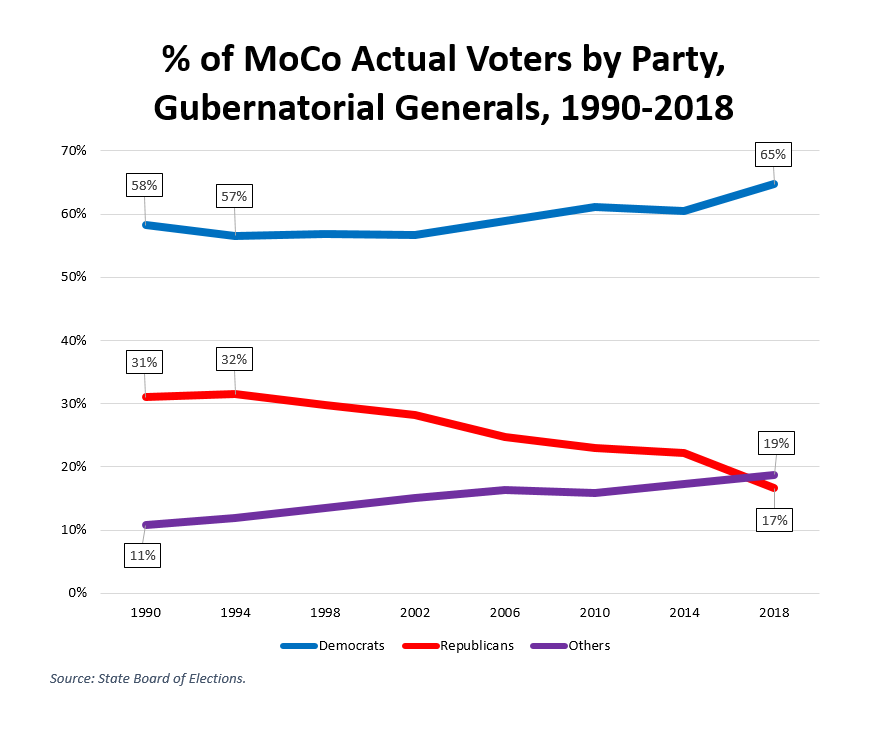
5. MoCo Republican registrations and voting have taken big hits under Donald Trump.
The table below shows changes in MoCo registrations and actual voting by party under the past 5 U.S. presidents. For each president, the general election in which they were first elected is used as the starting point and the general election near the end of their tenure in office is used as the ending point.
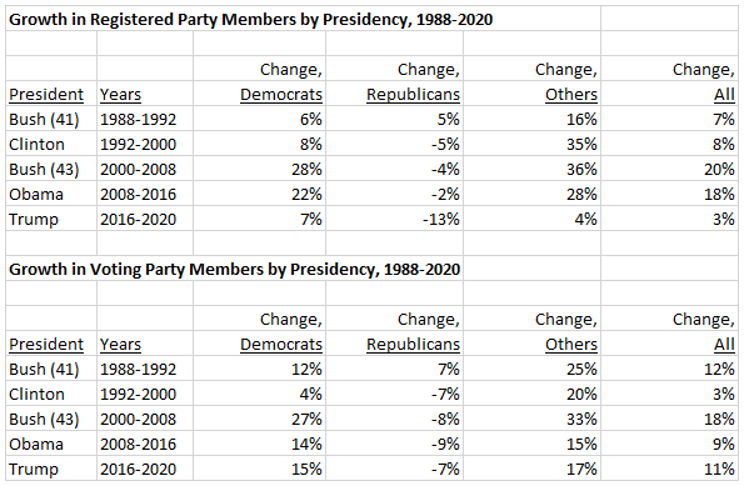
Democrats saw surges in registrations under both Bush 43 and Obama and enjoyed a large increase in actual voting under Bush 43. Unaffiliated and third party voters saw significant increases in registrations and voting during most periods although registration growth was slow under Trump. Republican registrations and voting grew under Bush 41 but fell under the next four presidents. Voting decline under Trump was about the same as under Clinton, Bush 43 and Obama, but consider that Trump was the only one of them who served just one term. Republican registration decline was huge under Trump (13%), far exceeding declines under his predecessors.
The GOP was once a factor in MoCo politics. GOP Congresswoman Connie Morella served in Congressional District 8, which accounts for most MoCo voters, from 1987 through 2003. Jim Gleason, who was MoCo’s first county executive in 1970-78, was a Republican. The GOP held county council and state legislative seats in the western and northern parts of the county for years. In the 1994 election, one-quarter of MoCo’s partisan elected offices were won by Republicans. But the last MoCo Republican office holders, District 1 Council Member Howie Denis and District 15 Delegate Jean Cryor, were defeated in 2006 and the party has not come close to winning a seat since.
MoCo Republicans might still matter in two ways. First, they are the third-largest group of Republicans in the state behind Baltimore County and Anne Arundel County. That makes them relevant in statewide GOP primaries for whatever that’s worth. Second, they have money. Republicans from all over the state come to MoCo to raise money just as Democrats do. Republicans might even toss some money to centrist Democrats just to prevent progressives from winning.
Once upon a time, the case could be made that MoCo Republicans were relevant on ballot questions. They certainly played a part in passing term limits four years ago. But given the fact that they are now just 15% of actual voters and their partisan embrace of nine districts helped kill Question D, even that is in question.
Is there anything the local party can do to reverse this free fall? That’s a tough nut to crack. MoCo is a diversifying county that looks nothing like the national Republican base that supported Trump. Not all is politically settled here as there are differences even among county Democrats on taxes, school reopening, school boundaries, criminal justice, land use, housing, economic development and other issues which are likely to surface in Democratic primaries. But it’s hard for county Republicans to be regarded as credible on local issues when their national counterparts are ransacking the U.S. Capitol and defending a seditious former president. Without a national GOP that adopts a very different brand and political strategy from the one it has now, it’s hard to imagine a local GOP reversing the trends above.

